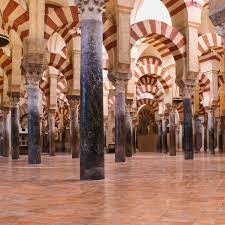ISLAMIC ARCHITECTURE
ISLAMIC ARCHITECTURE
The Muslims used archs and dome in their buildings on a wide scale while the dome provided a pleasant skyline. The union architectural device called corbelling or trabeate in building the method of putting one stone over the other projecting invertly till the gap is narrowed and covered. The sultanate buildings were limited to a)Calligraphy b)geometry c) fabrication. Calligraphy was most decorative part during the period. The most dominated form in the sultanate buildings is called arabesque.
Muslim architecture possess four distinctive features viz pronounced dome like an invested bell; long slender turrents at corners; palace hills supported pillars; and distinct gate which takes the form of a huge semi dome sunk in the front wall and bearing an admirable proportion to the building, while the actual entrance is small rectangular, opening under this arch.
Notable building which was planned by Qutb ud din Aibak was Qutab Minar which was intended to serve as Muazzin( a place to call the faithful to the prayer). However, this building was actually completed by Iltutmish. Subseqently, Firoz Tughlaq also carried out certain modifications. The planning of Qutub Minar was purely Islamic.Alauddin Khalji built Hauz i khas or Hauz i Ilahi, a tank in 70 acres with a stone and masonry wall around it. Another notable building of Alauddin was Siri, a new city to the north of Qutab Minar.Some of the prominent buildings built by the Tughlaq rulers include Tughlaqabad( the third of the seven cities of Delhi) built by Ghyasuddin Tughluq; palace built of golden bricks by Ghyas uddin Tughlaq. Muhammad bin Tughlaq constructed the new city of Jahanpanah( the fourth of the seven cities of Delhi).According to Farishta, Firoz Tughlaq constructed not less than 845 works.
Medieval Indian History- SC Raychoudhary


Comments
Post a Comment